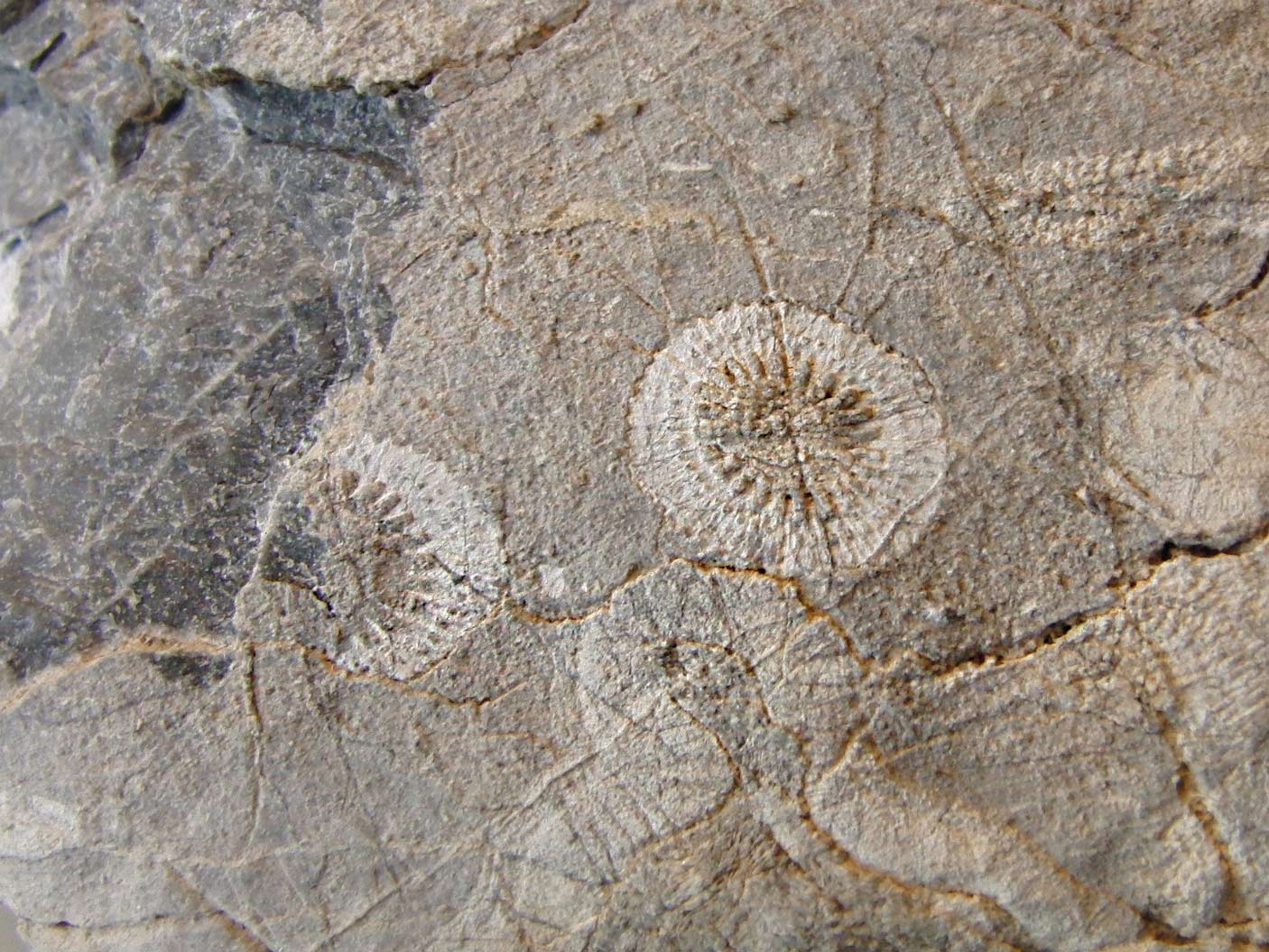In order to reach the summit of this limestone hill, you first have to climb a gentle slope composed of sandstones and shales. Although completely different, all three rocks belong to one unit – the so-called Auernig Formation. The sequence was formed around 300 million years ago during the Carboniferous Period in a coastal setting and represents the youngest bedrock in the Lake Zollnersee region. During that period, sand was washed from a land area into a shallow sea, where corals, calcareous algae, chambered microorganisms and sea lilies lived. Their calcareous shells and skeletons accumulated on the sea-bottom and gradually built up the fossil-packed limestone plateau we see today. Among the fossils, the remains of the extinct chambered microorganisms named fusulinids dominate, reaching the size of a grain of rice. The same species can be found in the Moscow Basins, suggesting the existence once of a direct seaway between the Carnic Alps and Russia. The occurrence of calcareous algae indicates that the sea was not deep, as these organisms require sunlight for life.
Cerca
Ultimi Post
- The temporary exhibition “The Wonders of the Underworld – Ampezzo, 20th June 2020
- The Geological Museum in Ampezzo opens next Saturday
- The temporary exhibition “Fossil fish from the Friulian Alps” opens again
- Coronavirus Emergency – extraordinary closing
- Presentation conference – book “INSIDE THE CARNIC ALPS” – Udine, 25th June 2019

